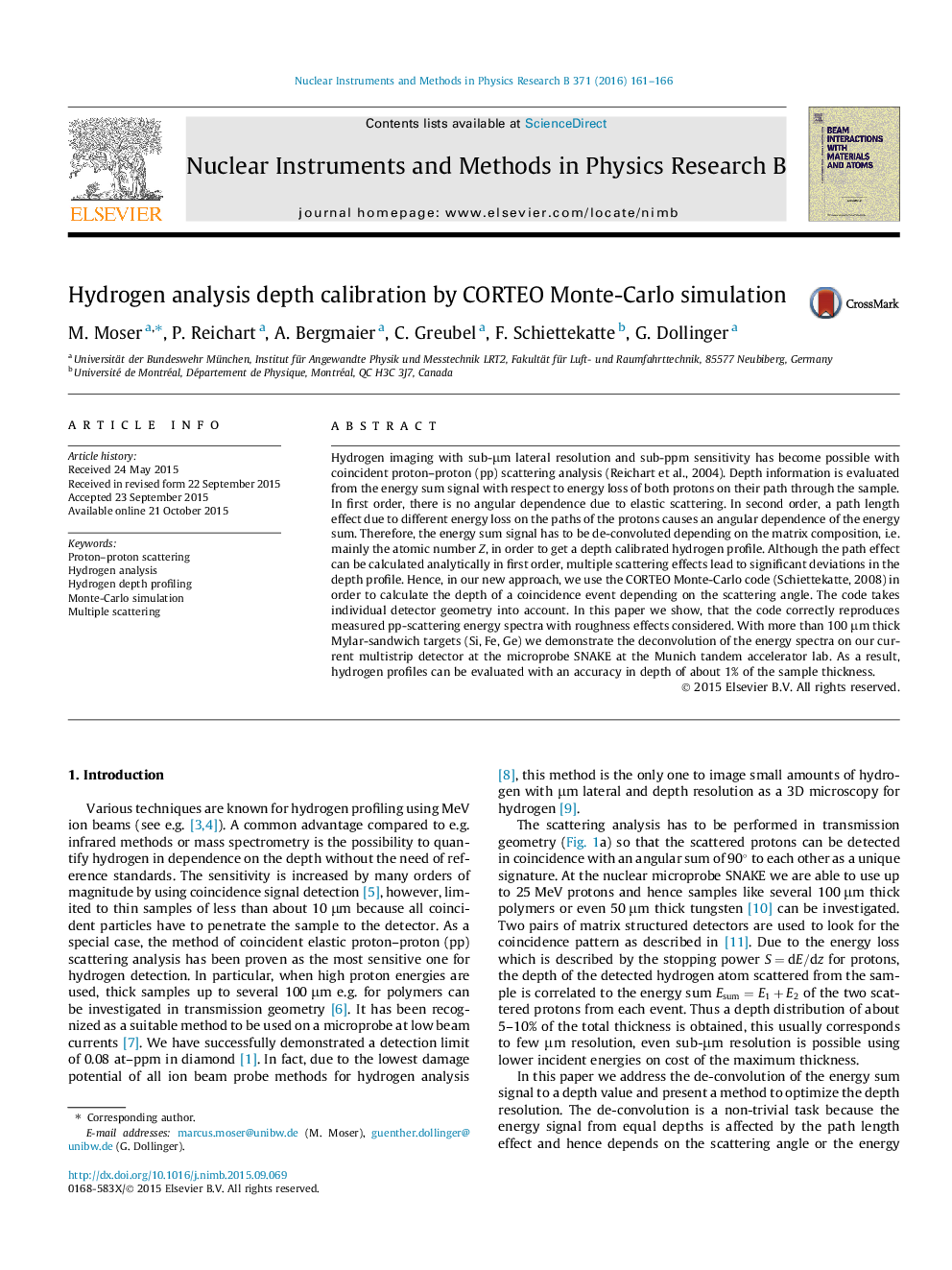| Article ID | Journal | Published Year | Pages | File Type |
|---|---|---|---|---|
| 1681558 | Nuclear Instruments and Methods in Physics Research Section B: Beam Interactions with Materials and Atoms | 2016 | 6 Pages |
Hydrogen imaging with sub-μm lateral resolution and sub-ppm sensitivity has become possible with coincident proton–proton (pp) scattering analysis (Reichart et al., 2004). Depth information is evaluated from the energy sum signal with respect to energy loss of both protons on their path through the sample. In first order, there is no angular dependence due to elastic scattering. In second order, a path length effect due to different energy loss on the paths of the protons causes an angular dependence of the energy sum. Therefore, the energy sum signal has to be de-convoluted depending on the matrix composition, i.e. mainly the atomic number Z, in order to get a depth calibrated hydrogen profile. Although the path effect can be calculated analytically in first order, multiple scattering effects lead to significant deviations in the depth profile. Hence, in our new approach, we use the CORTEO Monte-Carlo code (Schiettekatte, 2008) in order to calculate the depth of a coincidence event depending on the scattering angle. The code takes individual detector geometry into account. In this paper we show, that the code correctly reproduces measured pp-scattering energy spectra with roughness effects considered. With more than 100 μm thick Mylar-sandwich targets (Si, Fe, Ge) we demonstrate the deconvolution of the energy spectra on our current multistrip detector at the microprobe SNAKE at the Munich tandem accelerator lab. As a result, hydrogen profiles can be evaluated with an accuracy in depth of about 1% of the sample thickness.
